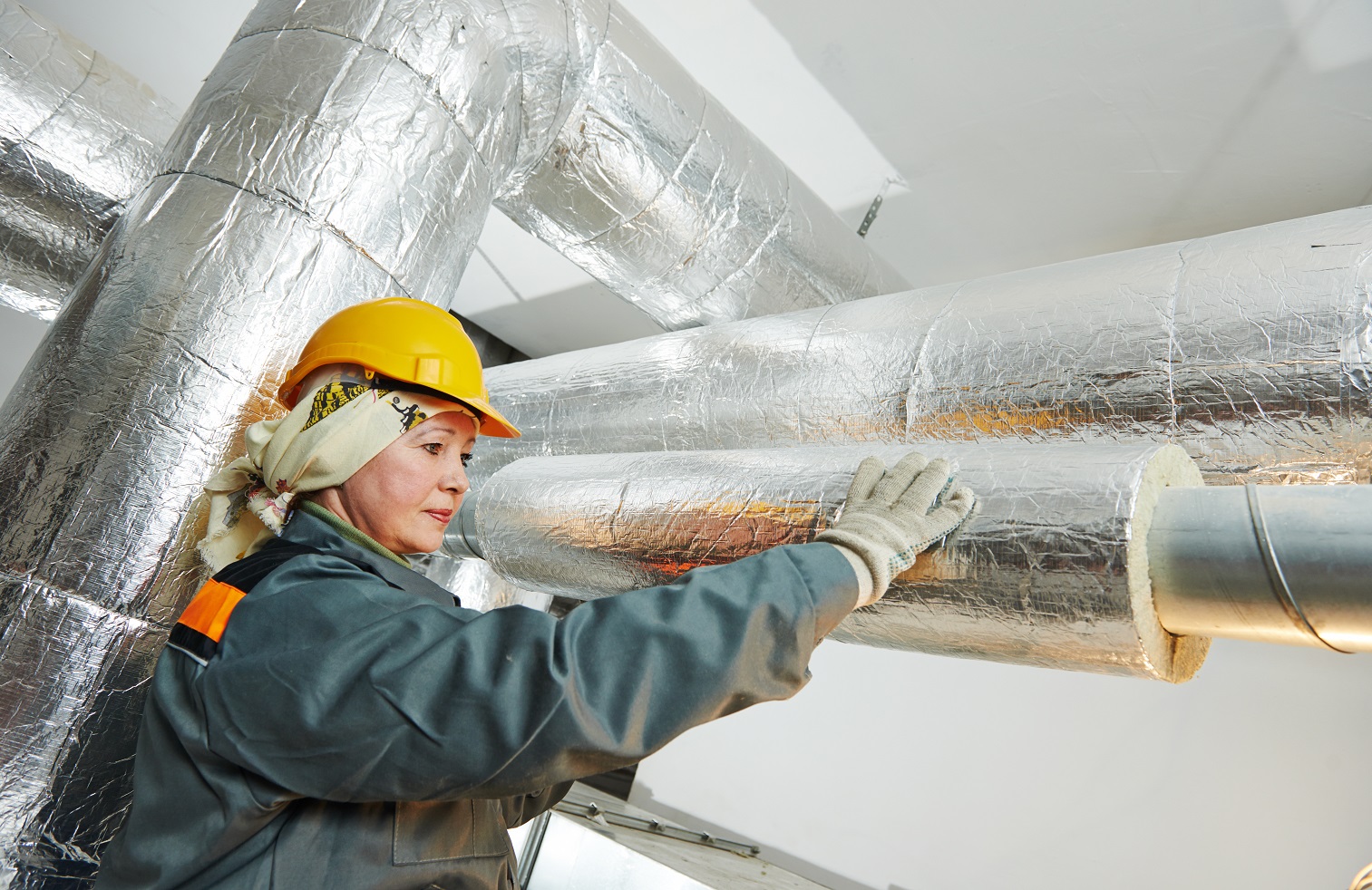Washington continues to lead by example on building performance with new investments to improve energy efficiency in state agency facilities – Washington State Department of Commerce
Washington continues to lead by example on building performance ... Washington State Department of Commerce


Over $4 Million in Grants for Repairs and Upgrades at State-Owned Facilities

Report by the Washington State Department of Commerce
The Washington State Department of Commerce has announced more than $4.1 million in grants through the State Project Improvement (SPI) program. The program aims to improve the performance of state-owned facilities and reduce greenhouse emissions from state operations, aligning with the Sustainable Development Goals (SDGs). These grants incentivize energy-efficient purchasing choices for capital projects already approved in agency budgets, resulting in higher returns on the state’s investments.
Grants Awarded
-
Department of Labor and Industries (LNI) – $3,348,261
LNI will expand on a project that upgrades HVAC systems and adds heat pumps. It will also retrofit existing fluorescent lighting fixtures and associated controls. This will create a flexible operating system that allows for zone light level adjustment as needed. The LED fixtures will be controlled by occupancy and daylight sensors, resulting in significant energy and operational savings. Additionally, this project will eliminate the environmental cost of fluorescent light disposal.
-
Washington Department of Transportation (WSDOT)
- $624,731 for radio sites at 14 locations around the state. These projects will upgrade on-site air-conditioning HVAC with high-efficiency heat pumps, improving current heating systems. The high-efficiency model heat pumps will allow remote monitoring and alarm the agency when temperatures exceed allowable limits.
- $139,406 to upgrade the air conditioning HVAC system at the Forest Learning Center in Toutle with energy-efficient heat pumps and enhanced controls for more energy savings and remote monitoring.
To be eligible for funding, projects must have been planned for and included in the agency budget. They must also demonstrate net cost savings and reduced greenhouse gas emissions. Grants are awarded based on the amount required to improve the project’s energy efficiency.
Commerce Director Mike Fong stated, “For decades, Washington has recognized that these are smart investments of taxpayer dollars. Energy efficiency measures, such as upgrades to HVAC, lighting, and other systems, are the most cost-effective way to reduce greenhouse gas emissions and improve building performance. We will continue to lead by example as we invest in the state’s carbon reduction goals.”
Buildings are the second-largest sector contributing to carbon emissions in Washington, responsible for over a quarter of statewide emissions. To date, Commerce has provided $10.5 million to fund energy retrofits at public buildings. The department is also a key partner with the State Efficiency and Environmental Performance (SEEP) Office in achieving reductions in greenhouse gas emissions and eliminating toxic materials from state agency operations.
Washington consistently ranks among the top states for energy efficiency policies and programs that save energy, advance equity, and produce environmental and economic benefits. This evaluation is conducted annually by the American Council for an Energy Efficient Economy (ACEEE).
Washington’s 2021 State Energy Strategy identifies energy efficiency in buildings as a core strategy for meeting climate goals. The state aims to achieve a 26% reduction in energy use in buildings by 2050.
The state’s Clean Buildings Performance Standard, the first of its kind in the nation, establishes energy performance standards for large commercial buildings. Capturing the opportunity for energy efficiency in commercial buildings, which have lifespans of 50 to 100 years, is crucial for achieving Washington’s climate goals. While the Clean Buildings Performance Standard will not go into effect until 2026, an early adopter financial incentive program is currently available to building owners.
For more information on the Clean Buildings Early Adopter Incentive Program, visit https://www.commerce.wa.gov/growing-the-economy/energy/buildings/early-adopter-incentive-program/.
SDGs, Targets, and Indicators
1. Which SDGs are addressed or connected to the issues highlighted in the article?
- SDG 7: Affordable and Clean Energy
- SDG 9: Industry, Innovation, and Infrastructure
- SDG 11: Sustainable Cities and Communities
- SDG 13: Climate Action
The article discusses grants for repairs and upgrades at state-owned facilities to improve energy efficiency and reduce greenhouse gas emissions. These goals align with SDG 7, which aims to ensure access to affordable, reliable, sustainable, and modern energy for all. Additionally, the upgrades contribute to SDG 9 by promoting sustainable infrastructure and fostering innovation. The focus on reducing emissions and improving building performance also relates to SDG 11, which targets sustainable cities and communities. Finally, the efforts to reduce greenhouse gas emissions align with SDG 13’s objective of taking urgent action to combat climate change.
2. What specific targets under those SDGs can be identified based on the article’s content?
- SDG 7.3: By 2030, double the global rate of improvement in energy efficiency
- SDG 9.4: By 2030, upgrade infrastructure and retrofit industries to make them sustainable
- SDG 11.6: By 2030, reduce the adverse per capita environmental impact of cities, including by paying special attention to air quality and municipal and other waste management
- SDG 13.2: Integrate climate change measures into national policies, strategies, and planning
The article mentions the grants for repairs and upgrades that aim to improve energy efficiency in state-owned facilities. These efforts contribute to the target of doubling the global rate of improvement in energy efficiency (SDG 7.3). The upgrades also align with the target of upgrading infrastructure and retrofitting industries to make them sustainable (SDG 9.4). Furthermore, the focus on reducing greenhouse gas emissions and improving building performance supports the target of reducing the adverse environmental impact of cities (SDG 11.6). Finally, integrating climate change measures into policies and planning is addressed through the emphasis on reducing emissions and improving energy efficiency (SDG 13.2).
3. Are there any indicators mentioned or implied in the article that can be used to measure progress towards the identified targets?
- Energy savings
- Operational savings
- Reduction in greenhouse gas emissions
- Improved building performance
The article mentions that the grants aim to achieve net cost savings and reduced greenhouse gas emissions. These indicators can be used to measure progress towards the targets of improving energy efficiency, upgrading infrastructure, and reducing environmental impact. Additionally, the emphasis on improved building performance implies that indicators such as energy savings and operational savings can be used to measure the effectiveness of the upgrades.
Table: SDGs, Targets, and Indicators
| SDGs | Targets | Indicators |
|---|---|---|
| SDG 7: Affordable and Clean Energy | 7.3: By 2030, double the global rate of improvement in energy efficiency | – Energy savings – Operational savings |
| SDG 9: Industry, Innovation, and Infrastructure | 9.4: By 2030, upgrade infrastructure and retrofit industries to make them sustainable | – Reduction in greenhouse gas emissions – Improved building performance |
| SDG 11: Sustainable Cities and Communities | 11.6: By 2030, reduce the adverse per capita environmental impact of cities, including by paying special attention to air quality and municipal and other waste management | – Reduction in greenhouse gas emissions – Improved building performance |
| SDG 13: Climate Action | 13.2: Integrate climate change measures into national policies, strategies, and planning | – Reduction in greenhouse gas emissions – Improved building performance |
Behold! This splendid article springs forth from the wellspring of knowledge, shaped by a wondrous proprietary AI technology that delved into a vast ocean of data, illuminating the path towards the Sustainable Development Goals. Remember that all rights are reserved by SDG Investors LLC, empowering us to champion progress together.
Source: commerce.wa.gov

Join us, as fellow seekers of change, on a transformative journey at https://sdgtalks.ai/welcome, where you can become a member and actively contribute to shaping a brighter future.







